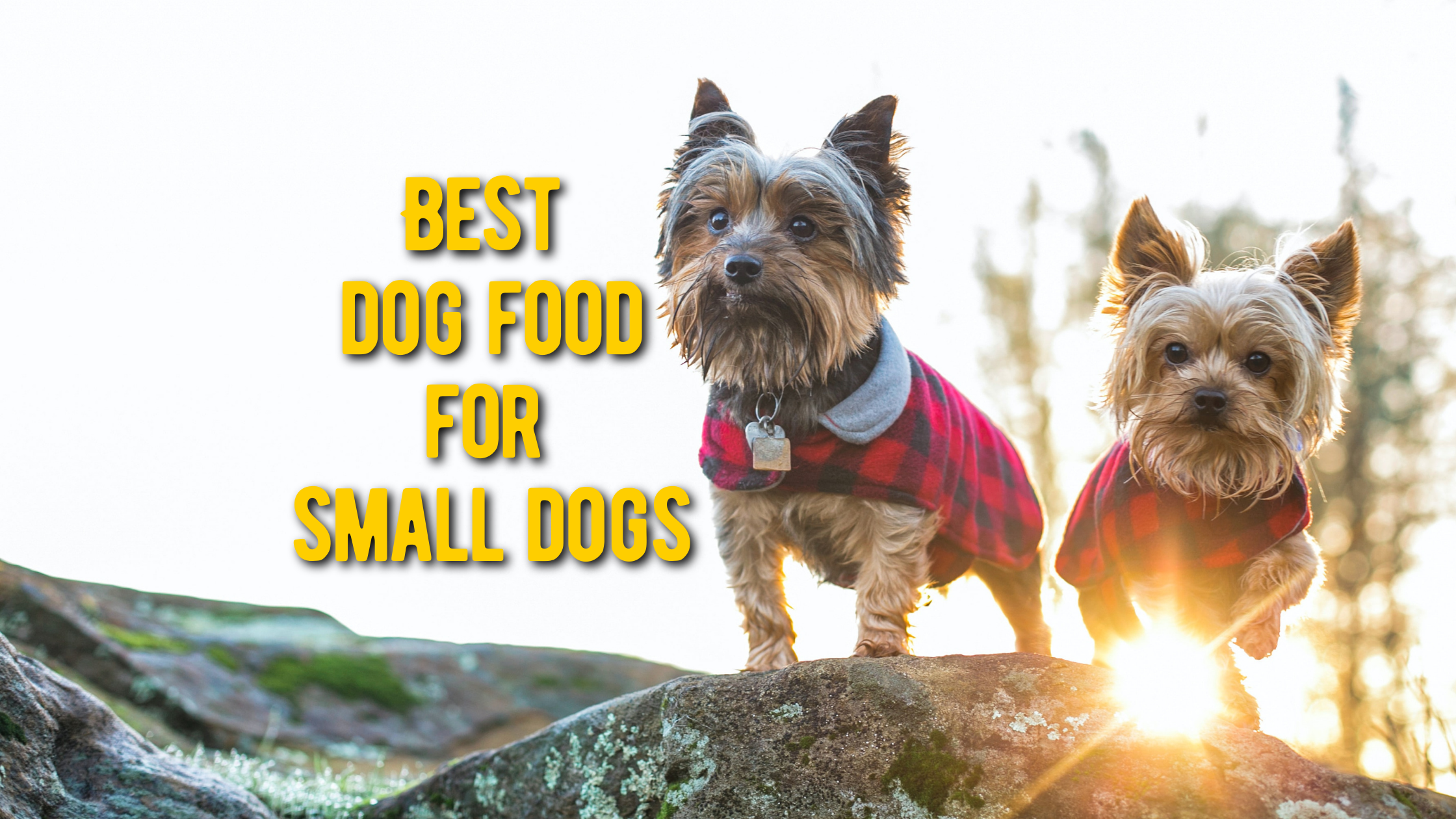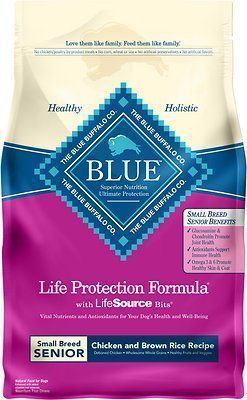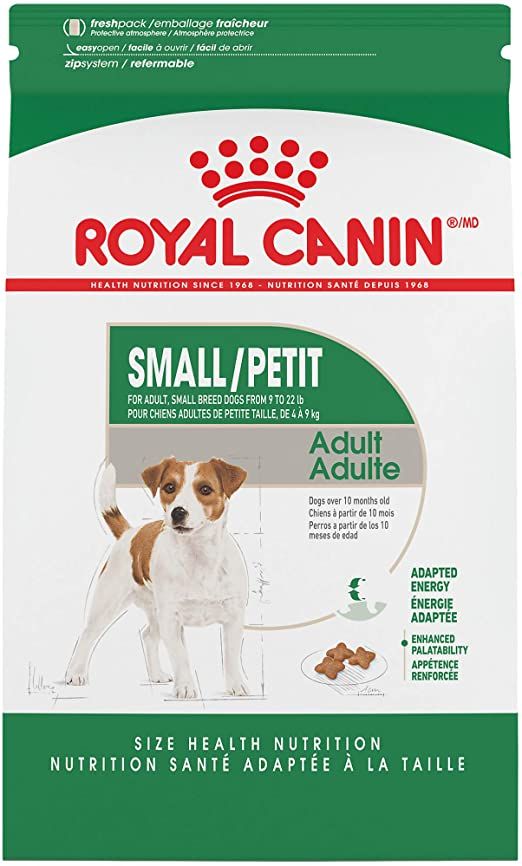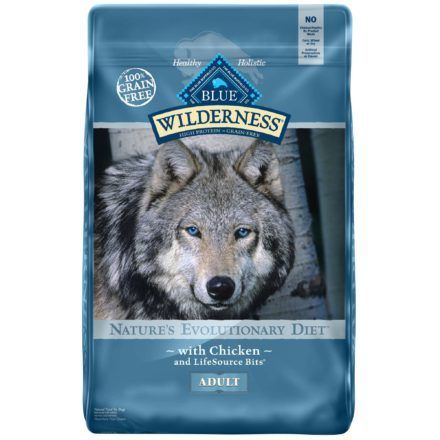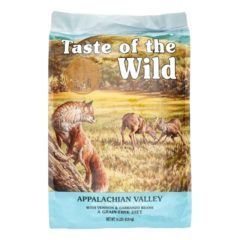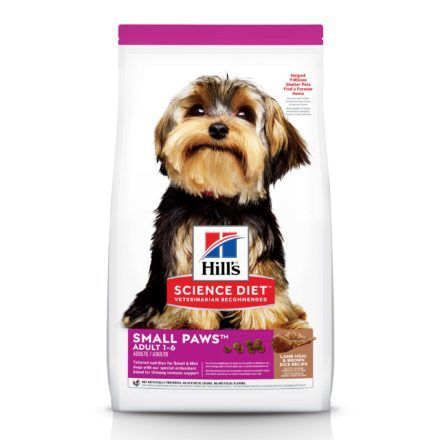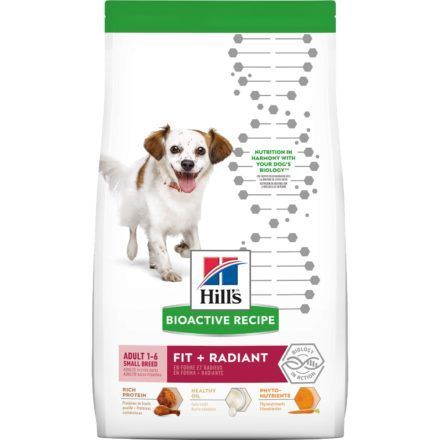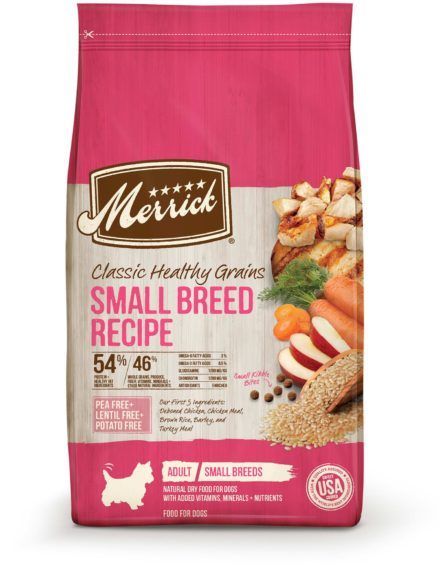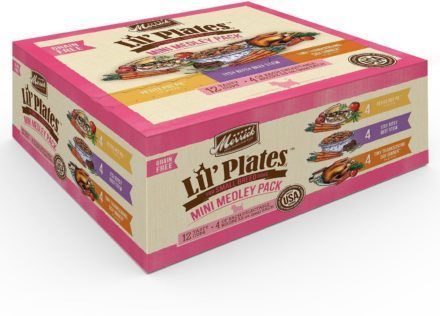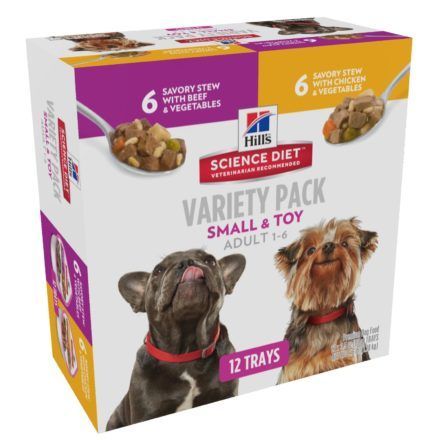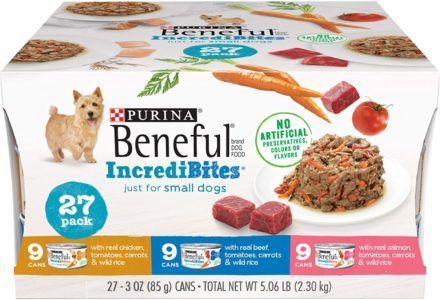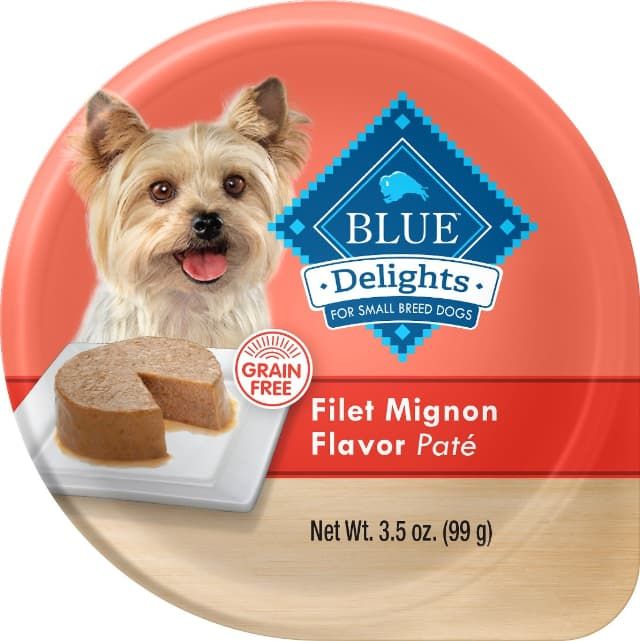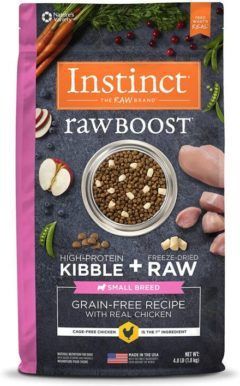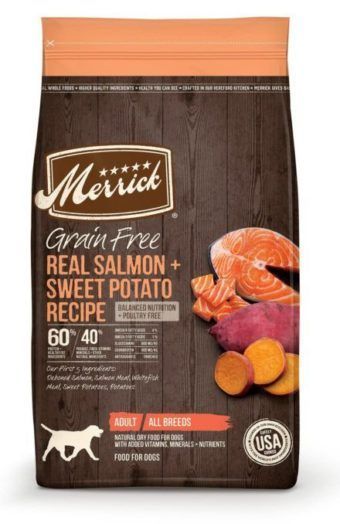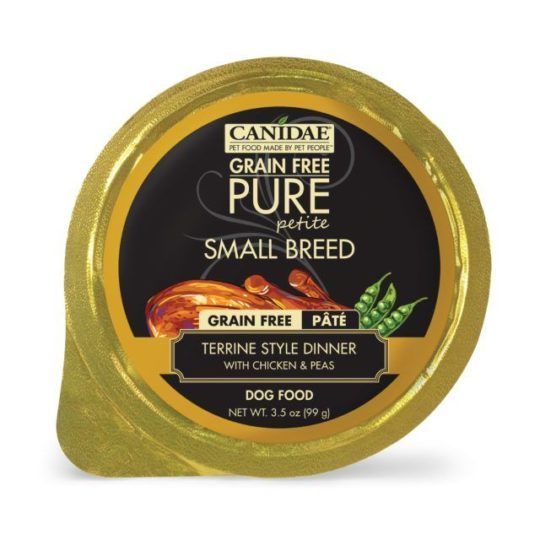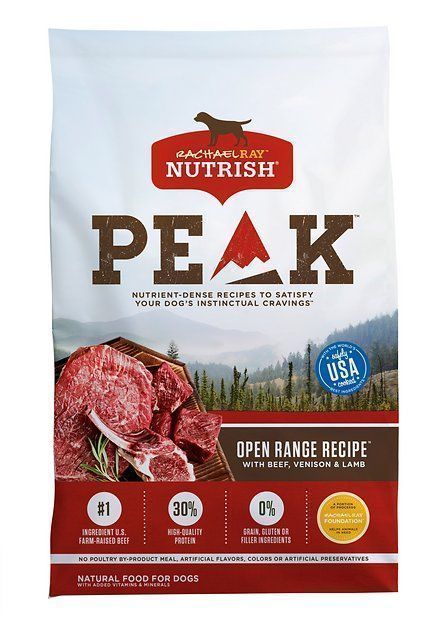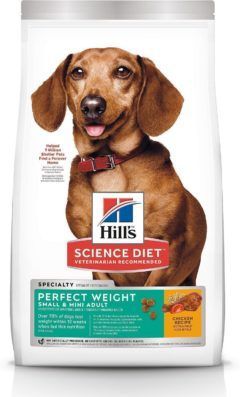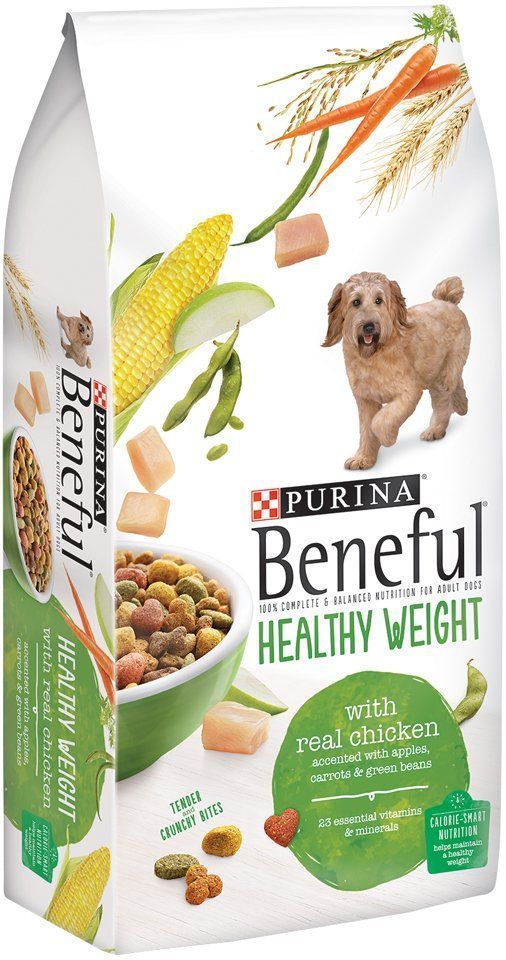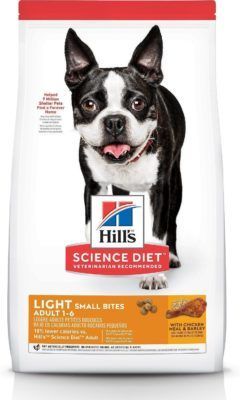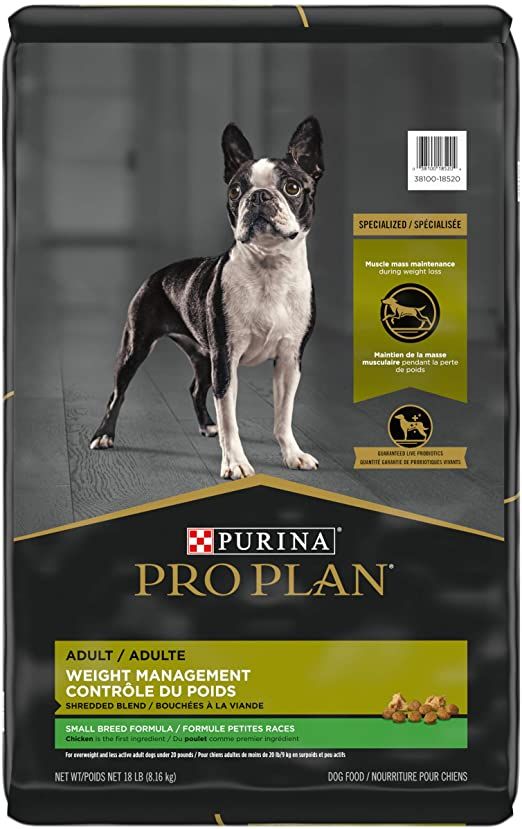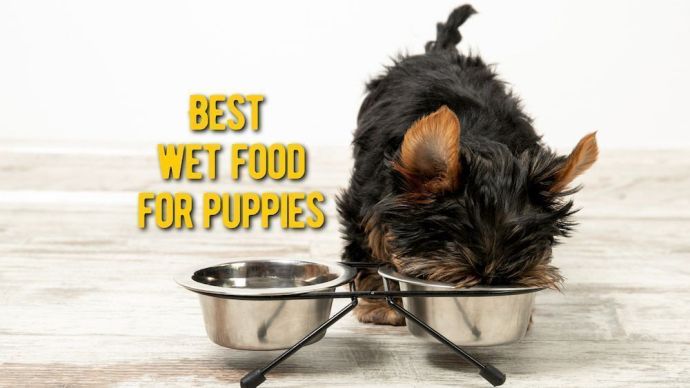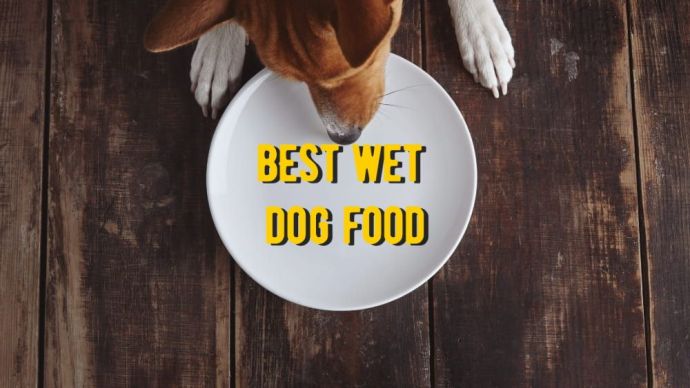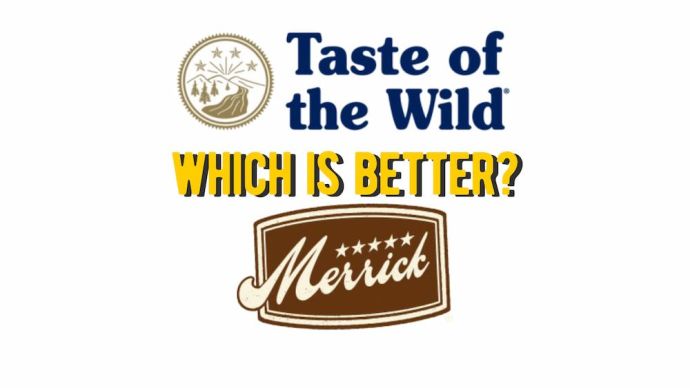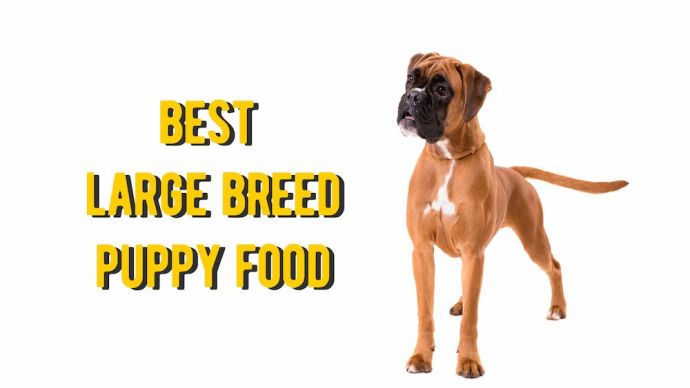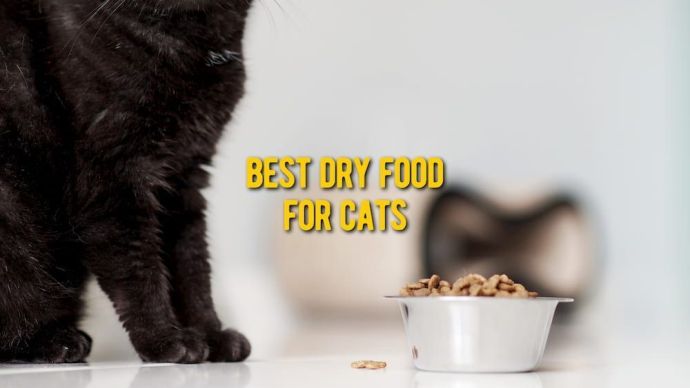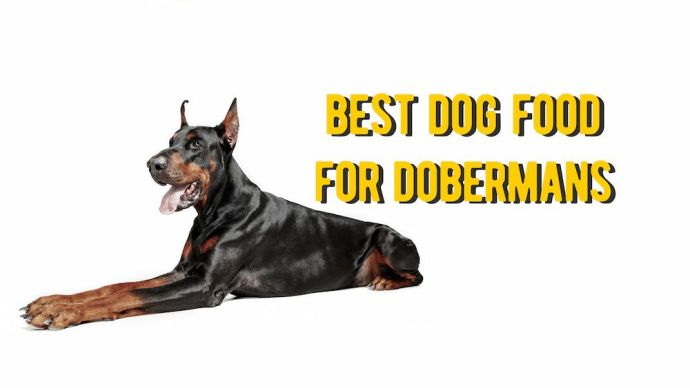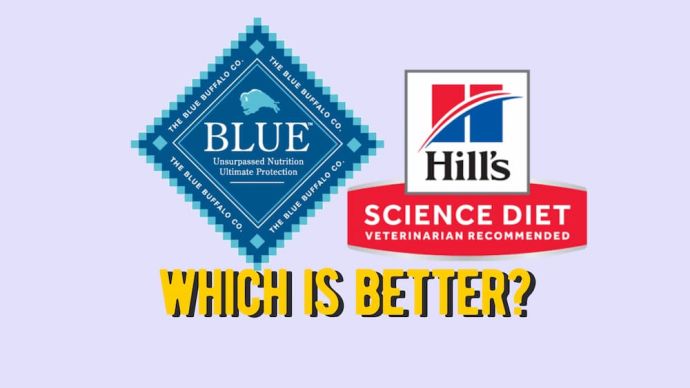The Best Dog Food for Small Dogs (Veterinary Review)
Written by:
Author: Dr. Edele Grey
Dr. Edele Grey is a veterinary surgeon with seven years of experience. She professionally works mostly with horses but has treated pets of all sizes including terrapins, llamas, and others. Dr. Grey graduated with honors from the University College Dublin, Ireland, has completed further education in Equine Sports Medicine. In her free time, she enjoys writing about pet ownership and educating people about veterinary care of animals and preventing disease.
View all 10 articlesLearn about our editorial process and veterinary review board.
Viewed: 259
Updated on: 06/30/2023
Small and toy dogs have higher metabolic needs than their larger counterparts, so they need more energy per pound of body weight.
The challenge is to pack this extra energy into small portions for their tiny tummies. The goal is to provide the best nutrition in small packages while being yummy tasting for pups’ pickiest!
At a Glance: TOP-3 Small Dog Foods to Choose
We gathered and reviewed our 3 favorite options of food in the chart below:
Products | Benefits | Links |
Our TOP Pick | Blue Buffalo’s Life Protection Formula - Small Breed Senior
| |
Runner-Up | Royal Canin Size Health Nutrition Small Dog
| |
Best Dry Food | Blue Buffalo’s BLUE Wilderness High Protein Grain Free
|
The Best Food for Toy Dogs (All Reviews)
Blue Buffalo’s Life Protection Formula
Top 3 ingredients:
- Deboned Chicken.
- Chicken Meal.
- Brown Rice.
Key features:
- Great mix of real meat, fruits and whole grains for maximum nutritional impact.
- No corn, no wheat, no soy.
- Supports joints health.
Analysis:
- Calories 371Kcal/8floz.
- Minimums: 23% crude protein, 13% crude fat.
Royal Canin Size Health Nutrition Small Dog
Top 3 ingredients:
- Corn.
- Chicken by-product meal.
- Brewers rice.
Key features:
- Tasty to entice even the fussiest eaters.
- Contains L-carnitine to help maintain a healthy weight.
- Reputable long-established brand.
Analysis:
- Calories 343 Kcal/8oz.
- Minimums: 25% crude protein, 14% crude fat.
The Best Dry Foods
1. Blue Buffalo’s BLUE Wilderness High Protein Grain Free
Top 3 ingredients:
- Deboned Chicken.
- Chicken Meal.
- Pea Protein.
Key features:
- All-natural ingredients, no artificial colors or flavors.
- Easily digested and tasty, you can add warm water if your pooch is being fussy.
- Good for senior dogs.
Analysis:
- Calories – 425Kcal/8floz.
- Minimums: Crude protein 36%, Crude fat 16%.
2. Taste of the Wild Appalachian Valley Canine Recipe
Top 3 ingredients:
- Venison.
- Lamb meal.
- Garbanzo beans.
Key features:
- No artificial colors, flavors or preservatives.
- No grain, corn or wheat.
- High protein.
- Multiple protein sources.
- Added probiotics and prebiotics to help with digestion.
- Guaranteed levels of selenium and vitamin E to support your pup’s immune system.
Analysis:
- Calories – 370Kcal/8floz.
- Minimums: Crude protein 32%, Crude fat 18%, Probiotic microbes 80 million/lb.
3. Hill’s Science Diet Adult Small Paws
Top 3 ingredients:
- Chicken.
- Cracked Pearled Barley.
- Brown Rice.
Key features:
- Specially formulated antioxidant blend to support your fur-baby’s immune system throughout their life.
- 100% satisfaction guarantee.
- Easy to digest.
- Contains omega-6 and vitamin E for a glossy coat and healthy skin.
- Easily digested and produced with high quality ingredients.
- “Nibble” sized kibble pieces.
Analysis:
- Calories – 371Kcal/8floz.
- Nutrients: Protein 24.9%, Fat 16.4%, Fatty acids 4.46%.
4. Hill’s Bioactive Recipe Adult Small Breed Fit + Radiant
Top 3 ingredients:
- Chicken.
- Cracked Pearled Barley.
- Pea Protein.
Key features:
- Includes L-carnitine for healthy metabolism and lean muscle.
- Includes antioxidants and phytonutrients.
- Easily digested to provide the best nutrition for your fur-friend.
- Supports skin and coat health.
- Perfectly balanced for a beautiful, luscious coat with coconut oil and fatty acids.
- No artificial preservatives, colors nor flavors. No corn, no wheat or soy.
Analysis:
- Calories – 286Kcal/8floz.
- Nutrients: Crude Protein 28.7%, Crude Fat 10.8%.
5. Merrick Classic Healthy Grains
Top 3 ingredients:
- Deboned chicken.
- Chicken meal.
- Brown rice.
Key features:
- Supplemented with Omega-6 and -3 fatty acids to a glossy coat.
- Contains the fiber-rich, ancient grain, quinoa to support digestion.
- All-natural ingredients. No corn, no wheat or soy.
- Supports skin and coat health.
- Packed full of protein, whole grains, fruits and veggies for a rich, nutritious meal.
- Glucosamine and chondroitin included for hip and joint health.
Analysis:
- Calories – 404Kcal/8floz.
- Minimums: Crude protein 27%, Crude fat 16%, Omega fatty acids 3.5%.
The Best Wet and Canned foods
1. Blue Buffalo BLUE Homestyle Toy Dog
Top 3 ingredients:
- Chicken.
- Chicken Broth.
- Chicken Liver.
Key features:
- Formulated to meet the energy needs of toy dogs.
- Soft texture with appetizing chunks of veg to satisfy chewing even in older pooches with missing teeth.
- No corn, no wheat or soy.
- No by-product meals.
- No artificial flavors or preservatives.
- Top three ingredients are chicken-based.
Analysis:
- Calories – 269Kcal/8floz.
- Minimums: Crude protein 9%, Crude fat 6%.
2. Merrick Lil’ Plates Mini Medley Grain-Free Variety Pack Adult
Top 3 ingredients (for Itsy Bitsy Beef Stew):
- Beef.
- Beef broth.
- Venison broth.
Key features:
- Glucosamine and chondroitin for hip and joint support as your pup grows. Also provides good joints support for adults.
- Variety packs help spice up dinner choices for fussy pooches.
- No corn, no wheat or soy.
- Real USDA-inspected de-boned protein source (meat, poultry, or fish).
- Tasty single-serve trays with meaty chunks in gravy for fresh dinner every day.
- Probiotics and prebiotics added to support digestion.
Analysis:
- Calories – 213Kcal/8floz.
- Minimums: Crude protein 8%, Crude fat 3%.
3. Hill’s Science Diet Adult Small Paws Variety Pack
Top 3 ingredients (Chicken & Vegetables):
- Water.
- Chicken.
- Pork Liver.
Key features:
- Convenient, single serve packs of nutritionally balanced meals.
- Real chunks of meat and veggies.
- High quality fiber to improve digestion.
- Variety for fussy pups.
- Max water content 83%; great for fur-iends that don’t like to drink much.
Analysis:
- Calories – 168Kcal/8floz.
- Minimums: Crude protein 4%, Crude fat 2.5%.
4. Purina Beneful IncrediBites Small Dog Variety Pack
Top 3 ingredients:
- Chicken Broth.
- Chicken.
- Wheat gluten.
Key features:
- A complete, balanced diet for adult pocket pooches.
- Tiny, easy-to-chew bites with a light sauce.
- No fillers, every ingredient has a job.
- Completely traceable from farm-to-pup.
- A balanced diet with a variety of flavors and contain.
- All-natural ingredients with no artificial colors, preservatives nor flavors.
Analysis:
- Calories – 232Kcal/8floz.
- Minimums: Crude protein 11%, Crude fat 2.5%.
5. Blue Buffalo BLUE Diving Delights for Small Dogs
Top 3 ingredients:
- Beef.
- Chicken.
- Beef Broth.
Key features:
- Available in variety packs too for fussy pups.
- Enhanced with vitamins and minerals.
- Pate texture, perfect for older canines with missing teeth.
- High-quality ingredients.
- No artificial flavors or preservatives.
Analysis:
- Calories – 254Kcal/8floz.
- Minimums: Crude protein 8%, Crude fat 6%.
The Best Grain Free
1. Instinct Raw Boost Grain Free
Top 3 ingredients:
- Chicken.
- Chicken meal.
- Chickpeas.
Key features:
- Small kibble, perfect for tiny jaws.
- Bites of freeze-dried real meat.
- Completely grain free.
- Cage-free Chicken for lean muscle mass.
- Phosphorus and Calcium to support bone and tooth strength.
Analysis:
- Calories – 975Kcal/8floz.
- Minimums: Crude protein 35%, Crude fat 20%.
2. Merrick Grain Free Real Salmon and Sweet Potato
Top 3 ingredients:
- Deboned salmon.
- Salmon meal.
- Peas.
Key features:
- Locally sourced ingredients.
- Whole foods for a meal packed with vitamins, minerals and antioxidants.
- Grain Free, using potato and sweet potato for energy.
- High quality protein to build and maintain healthy muscle.
- High levels of omega-3 and -6 fatty acids to support a healthy, glossy coat.
Analysis:
- Calories – 379Kcal/8floz.
- Minimums: Crude protein 34%, Crude fat 14%, Omega fatty acids 5%.
3. Taste of the Wild High Prairie Grain-Free
Top 3 ingredients:
- Buffalo.
- Lamb meal.
- Chicken meal.
Key features:
- Vitamins and antioxidants sourced from real fruits and veggies.
- Trusted and sustainable sources of ingredients.
- Digestive support proprietary K9 strain probiotic blend with chicory root for prebiotic support.
- Grain-free using peas and sweet potato as digestible energy.
- All-natural recipe, no artificial flavors, colors, nor preservatives.
Analysis:
- Calories – 370Kcal/8floz.
- Minimums: Crude protein 32%, Crude fat 18%.
4. Canidae Grain Free PURE Petite/Small Dog Terrine Style Dinner
Top 3 ingredients:
- Chicken broth.
- Chicken.
- Turkey.
Key features:
- Natural with limited ingredients for sensitive small pooches.
- Grain free, also carrageenan and soy free.
- Designed for all life stages including senior pups.
- Convenient single-serve trays for freshness.
- Soft and tasty food for picky pups with difficulty chewing kibble.
Analysis:
- Calories – 436Kcal/8floz.
- Minimums: Crude protein 8.5%, Crude fat 5%.
5. Rachel Ray Nutrish PEAK Grain Free Natural
Top 3 ingredients:
- Chicken.
- Chicken Meal.
- Dried Peas.
Key features:
- USA farm-raised chicken is the primary ingredient.
- Cranberries as a source of antioxidants.
- No poultry by-product meal.
- Peas, beets and carrots for fiber-rich digestive support.
- Small kibble, perfect for small mouths.
Analysis:
- Calories – 368Kcal/8floz.
- Minimums: Crude protein 26%, Crude fat 16%.
The Best for weight loss/ weight control
1. Hill’s Science Diet Adult Perfect Weight Small & Mini
Top 3 ingredients:
- Chicken.
- Cracked Pearled Barley.
- Brown Rice.
Key features:
- Suitable for long term weight maintenance and lean muscle development.
- Clinically proven antioxidants, vitamins C & E to support immune system health.
- Clinically proven for safe weight loss with visible results within 10 weeks.
- No by-product meal.
Analysis:
- Calories – 291Kcal/8floz.
- Minimums: Crude Protein 28.6%, Crude fat 11.2%.
2. Purina Beneful Healthy Weight
Top 3 ingredients:
- Chicken.
- Chicken by-product meal.
- Whole grain corn.
Key features:
- US farm-raised chicken.
- No artificial flavors, nor preservatives.
- Completely balanced for tiny adults.
- Small, easy to chew kibble with soft bites to encourage fussy eaters.
- 23 vitamins and minerals.
Analysis:
- Calories – 307Kcal/8floz.
- Minimums: Crude protein 25%, Crude fat 8%.
3. Wellness CORE Grain-Free Healthy Weight
Top 3 ingredients:
- Deboned Turkey.
- Turkey meal.
- Chicken meal.
Key features:
- Supplemented with glucosamine and chondroitin to support joint health.
- Grain-free and protein-rich.
- Variety of recipes available to tempt even the pickiest pup.
- Small, crunchy kibble.
- High fiber for satiety and weight management.
Analysis:
- Calories – 418Kcal/8floz.
- Minimums: Crude protein 34%, Crude fat 13%.
4. Hill’s Science Diet Adult Light Small Bites
Top 3 ingredients:
- Chicken meal.
- Cracked pearled barley.
- Pea fiber.
Key features:
- High protein and fiber formula helps lose weight without hunger.
- Omega-6s and vitamin E for a glossy coat and healthy skin.
- 100% satisfaction guarantee.
- Precisely calculated nutrition with L-Carnitine for maintaining a healthy weight.
- Bite-size kibble for tiny mouths.
Analysis:
- Calories – 271Kcal/8floz.
- Minimums: Crude protein 25.3%, Crude fat 8.4%.
5. Purina Pro Plan Weight Management Adult Small Breed Formula
Top 3 ingredients:
- Chicken.
- Rice.
- Corn Gluten Meal.
Key features:
- Crunchy kibble mixed with tender shredded pieces to encourage the pickiest of pups.
- Fortified with calcium and phosphorus to maintain strong bones and teeth.
- High protein to help keep hunger at bay between meals.
- Balanced nutrition with ideal protein-to-fat ratio for lean muscle mass while losing weight.
- Live probiotics and prebiotic fibers support healthy digestion.
Analysis:
- Calories – 346Kcal/8floz.
- Minimums: Crude protein 30%, Crude fat 10%.
How to choose Food for Small Dogs?
Choosing a portion of food can be daunting, bombarded with so much information and marketing hype it can make your head spin. In this article, we’ve detailed some brands and types of food specially developed for small dogs to help you navigate the sea of information.
Dogs are members of the order Carnivora, a group of mammals that share tooth structures (cats, hyenas, foxes), but not all are absolute meat-eaters (true carnivores); some need a combination of meat and plants in their diets (omnivores). In fact, some members of this family are herbivores (only eating plants), including giant pandas! Dogs are omnivores, so they should eat a balanced diet containing plants and animal foods; a meat-only diet wouldn’t meet all nutritional requirements. Nature even published a study showing that dogs have evolved into true omnivores (Axelsson et al., 2013). An intestinal tract can digest an omnivorous diet, and a high-quality source of protein and fats will maximize their digestibility for your pup.
The primary goal of any pet food is to ensure it’s safe, suitable for the digestive system, and meets all of their dietary needs. So what do you need to consider when buying your pocket pooch his dinner?
Nutritional Content
Dogs need a balanced diet containing carbohydrates, protein, fats, vitamins, and minerals to help them grow strong bones and muscle tissue, develop their immune systems, and stay healthy. The AAFCO (Association of American Feed Control Officials) has produced guidelines for the nutritional requirements that commercial diets should meet in North America. These aren’t absolute requirements for your pet, as illness and life stage can change these required levels.
Carbohydrates
In human nutrition, carbs often get a bad rap, and while dogs primarily use protein and fat as energy, they use carbohydrates too. Your pooch’s digestive tract produces enzymes that digest starches and carbohydrates. More complex carbohydrates (grains) can be cooked to improve their digestibility for dogs. Carbs are suitable for your pup; there have been some tentative links between grain-free or ‘boutique’ diets for dogs and some diseases, including heart disease in pets (Freeman, 2018).
Protein
While your pooch doesn’t need a meat-only diet, they need essential amino acids found in plant and animal protein sources, and their digestive system makes these plant proteins accessible. Too little protein in your pup’s diet can stunt their growth and ability to maintain their weight and energy levels. Puppies and nursing bitches need higher protein levels than adult dogs.
Protein levels over your pup’s requirements are stored as fat, and the by-products of digestion are removed by the kidneys. If your pet is overweight or has been diagnosed with kidney disease, your veterinarian will likely advise you to reduce the amount of protein in their diet. Have you ever seen yellowed patches on your lawn where your dog has peed? Those are caused by the excess protein in their diet being eliminated through urine.
READ MORE: How much to feed a Puppy by weight
Fats
Fat is a misunderstood nutrient whose name is spoken in hushed tones; fat has a higher caloric (energy) number gram weight (9cal per gram) than protein/carbs (4cal/gram). Due to this, the caloric content of pet food is easily varied by the fat content, which varies widely with dry foods containing less fat, while wet foods and many commercial raw diets are higher in fat.
Fat is good in moderate amounts; it provides energy and insulation. Fats also contain fatty acids such as omega-3 and omega-6, which play a role in brain function and inflammation and help your pet to maintain healthy skin and coat. Unlike humans, fat doesn’t cause clogged arteries and heart attacks in dogs, and they don’t suffer the same type of heart disease as us. However, some conditions, such as pancreatitis (inflammation of the pancreas), can be exacerbated with high-fat foods. Overweight or lazy pooches shouldn’t be fed high-fat diets as they will gain more weight which can complicate other disorders such as arthritis.
So, is a high-fat diet ever a good idea? Yes, very thin and active dogs can benefit from the extra energy a high-fat diet provides. Bitches that are nursing and growing puppies also need more energy than typical adult dogs, so a higher fat content in their diet will help. If your pet is a picky eater, higher-fat foods are tastier, which can help encourage them to eat.
Fat is often used to replace protein and carbohydrates, which can help encourage a sick pup to eat more.
Vitamins & Minerals
Like us, our canine companions need vitamins and minerals to help support their organ function and immune systems, but human supplements are not always suitable for our fur friends. Commercially produced diets labeled as “complete” or “balanced” are formulated to contain appropriate levels of vitamins and minerals to meet your pup’s dietary needs. Many homemade diets lack one or more of these vital nutrients, so if you want to feed your dog a homemade diet, we advise you to formulate the diet in conjunction with a veterinary nutritionist.
Water
All foods will contain some amount of water, impacting how much your small dog wants to drink extra. Dry foods contain as little as 10% water, while wet foods commonly contain up to 80% or 90% water.
Interpreting nutrition labels
Reading food labels on pet food can be very confusing as the numbers on the label represent the weight of carbohydrate/protein/fat in the food but not the percentage of the food’s total calories so you may need to use a converter to better understand the nutritional content in a commercial product.
The ash content of food is the inorganic part (minerals) left after heating, removing all organic matter (protein, carbohydrate, fat) and water from the food. The ash content isn’t required to be printed on the label, so that can interfere with calculations of caloric percentages (e.g., what is the protein percentage compared to the total food calories).
Wet vs Dry food
The first comparison we’re faced with when choosing breakfast for our pups is wet vs. dry food. Both types of food are acceptable, but you should consider your dog’s requirements.
Wet/canned food is excellent for increasing the water your small dog gets if they’re not a big drinker. This is particularly helpful if you live in a hot climate. Wet food won’t replace water, so fresh water should always be available for your little one. Dogs missing teeth or having difficulty chewing can get their nutritional requirements the best with wet food. Wet food is smellier than dry, so sick or older dogs who can’t smell or are reluctant to eat can be encouraged with canned food.
On the other hand, dry food can be conveniently left out all day for your small dog to eat at their own pace without spoiling or risking food poisoning in your pup. Dry kibbles are often less expensive than wet foods, and their crunchy texture can help maintain clean teeth and reduce plaque and tartar build-up. Remember, dry food won’t eliminate plaque but can reduce the amount being formed.
Mixing and matching wet and dry food combinations is another good choice. This way, your pet gets the best of both worlds; just ensure you’re feeding the right amount of calories for your dog’s ideal weight to prevent obesity.
READ MORE: When can Dogs eat adult food
Raw vs Cooked vs Vegetarian/Vegan vs Grain-free
A ‘bone’ of contention for many is what ingredients should be in our pets’ foods. These diets have pros and cons, but no matter what diet you choose, it should be balanced, complete, and not upset your pooch’s digestive system.
Proponents of raw food diets argue that dogs are descended from wolves; however, our modern canine companions have adapted to the diets fed by humans over millennia, including vegetables and cooked foods. You and your pet have several risks in feeding a raw diet.
We, humans, are placing more emphasis on a plant-based lifestyle for ourselves and our pups, and contrary to popular belief, if the diet is formulated correctly, some dogs can thrive on vegan diets. The caveat is that a veterinary nutritionist must carefully design the diet to ensure it meets all of your fur friend’s nutritional needs. Unfortunately, most home-prepared vegetarian diets lack essential nutrients causing deficiencies in pets.
One of the latest ‘fads’ for pets is the ‘grain-free’ diet claiming to prevent allergies and myriad health issues. One problem is that there’s no evidence to support these claims! Grains are added to diets, not as ‘fillers’ but because they provide the required nutrients for our pups, including vitamins, minerals, and fiber. A recent study has shown that dogs naturally produce enzymes to digest grains efficiently (Axelsson et al., 2013). Most commercial products include cooked grains, which are even more easily digested by our canine companions. There are also claims that dogs are allergic to gluten, a protein in many grains; this isn’t true. Food allergies are relatively rare in pooches and are even more rarely related to grains. The only confirmed case of gluten intolerance has been in one family of Irish Setters (Daminet, 1996). Many of the products touted as grain-free replace the grain component with legumes (peas and beans) or potatoes that contain less fiber and nutrients and can cause upset tummies in some pets.
READ MORE: When to switch to Senior dog food
Budget vs Premium Foods
We often think that a higher price point of pet food equates to higher quality, particularly if the label has certain buzzwords, including ‘organic’, ‘human grade,’ or ‘natural.’ Labeling rules are based on the guidelines produced by AAFCO, which, unfortunately, have no regulatory power.
By-products are a scary word for most of us, but it just means that it’s part of an animal that typical consumers don’t want to eat in certain parts of the world. Chicken feet is a good example; most Americans shudder at the thought of eating these, while chicken foot soup is a popular dish in Jamaica. Seeing the word ‘meal’ on the label can also be scary, but this means that the ingredient was heated, strained, and powdered. People in Western countries tend not to eat organ meats, which are more nutritious than muscle meats for our pets. Using these parts of slaughtered animals for pet foods actually reduces the waste from the human meat industry and makes it more sustainable.
Just because a product is expensive, boutique, or produced in small batches doesn’t equate to better quality. I tell my clients to research their chosen brands to help them decide which is the most suitable for their small dog.
Life Stage Diets
After reading about ‘fad’ diets, you could be forgiven for thinking this is likely one too, however, they’re not. Life-stage diets are specially formulated to provide differing levels of energy and some vitamins and minerals depending on the requirements for your pet. Puppies need more energy and high-quality protein to help them grow strong and healthy while older dogs are slowing down and may have difficulty chewing so senior diets tend to be lower in energy to reduce weight gain, support dental health and may contain higher levels of vitamins B and E alongside essential fatty acids to help support brain function in aging pets.
Specific Diets
These diets are available as we know that some breeds are more prone to certain health conditions than others, for example, Miniature Schnauzers are prone to high cholesterol and part of this can be managed by diet. That’s not to say that this food couldn’t be given to a Maltese with high cholesterol as diet management is the same irrespective of breed. These diets are not essential and your vet will discuss the food options depending on your pet’s specific requirements.
Protein Sources
Protein is essential for muscle repair, organ, and hormone function while also being used as a preferred energy source by dogs. Proteins are composed of amino acids, which are divided into essential and non-essentials. Essential amino acids are those that dogs can’t produce themselves and must extract from their diet. In general, animal protein sources are of higher quality than plant protein in their amino acid profile. No protein is perfect, so combining plant and animal protein in your pup’s diet will give a great quality diet.
The three most commonly used proteins in pet foods are chicken, beef, and pork with some exotic protein sources emerging such as ostrich, bison, and venison. Many of these are hailed as ‘natural’ and better for pets with allergies but there are some negatives to these products. Many of these are seasonally produced which can lead to shortages throughout the year, and the nutrient profiles of these meats can be more variable than farmed proteins which means that quality control is more difficult.
Allergies to foods in dogs are uncommon, and management involves feeding a diet with limited ingredients, so one novel protein and one carbohydrate source. Feeding an exotic protein source doesn’t prevent allergies and many commercial foods with these also combine more common proteins such as chicken or beef which negates any possible benefit that the exotic protein may provide. If you suspect your pooch has a diet-related allergy, a strict food trial in consultation with your veterinarian is the best course of action.
Weight Management Diets
Over half of pet dogs are obese and similar to humans, excess body fat can increase the risks of developing diabetes or urinary problems and can cause complications of other illnesses such as osteoarthritis. Managing your pet’s weight follows the same principle as humans, calories in vs calories out. More calories in than out will lead to weight gain. Weight management foods are marketed toward helping your pup lose weight, however simply feeding your dog a smaller amount of their usual kibble while increasing their exercise will result in the same outcome. If you’re not sure about your pet’s weight you can check the World Small Animal Veterinary Association (WSAVA) body condition score chart here.
FAQ
🐶 Why do small dogs require different food?
Small dogs need smaller kibble sizes for their little mouths and many brachycephalic (short-nosed) breeds such as Shih Tzus and French Bulldogs can have difficulty eating due to the shape of their jaws and may need special kibbles to help or be fed wet food. Active small dogs tend to have a higher metabolic rate than larger breeds and so actually need more calories per pound of body weight, but you should still be careful about overfeeding as obesity in small breeds is a very common health issue we see in veterinary practice.
🐾 What is the best dog food recommended by vets?
There is no one ‘the best’ food for all small dogs. Your veterinarian knows requirements and is placed to advise you about what food is an excellent choice for your tiny tyke. When I discuss food with my clients, I suggest a few of what I consider suiting that owner’s requirements and suggest trying them to see which suits their pet the best.
🐕 What is the difference between large and small dog food?
On the surface, kibble size is the main difference we see between large and small foods. There are some other nutritional differences as in general small breeds can suffer from increased rates of dental disease while large breeds need a slightly larger amount of calcium as puppies (though don’t need supplementation if fed the right diet).
Article Sources:
- Axelsson, Erik, Ratnakumar, A., Arendt, M. et al. “The Genomic Signature of Dog Domestication Reveals Adaptation to a Starch-Rich Diet.” Nature, 23 Jan. 2013, https://www.nature.com/articles/nature11837.
- Freeman, Lisa M. “A Broken Heart: Risk of Heart Disease in Boutique or Grain-Free Diets and Exotic Ingredients.” Clinical Nutrition Service, 4 June 2018, vetnutrition.tufts.edu/2018/06/a-broken-heart-risk-of-heart-disease-in-boutique-or-grain-free-diets-and-exotic-ingredients/
- Daminet, S. “Gluten-Sensitive Enteropathy in a Family of Irish Setters.” PubMed Central (PMC), 1 Dec. 1996, ncbi.nlm.nih.gov/pmc/articles/PMC1576718/
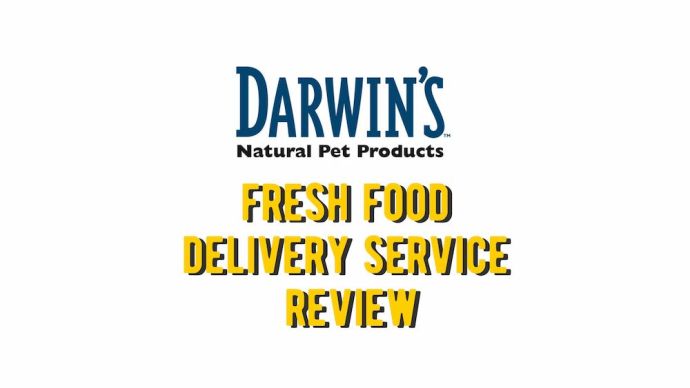 Dog Food Reviews Darwin’s Pet Food Review: Fresh Pet Food Delivery Service Review (Vet Approved)
Dog Food Reviews Darwin’s Pet Food Review: Fresh Pet Food Delivery Service Review (Vet Approved) - 406
- 0
 Dog Products & Toys Reviews The 10 Best Brush for Australian Shepherd: Review and Buying Guide
Dog Products & Toys Reviews The 10 Best Brush for Australian Shepherd: Review and Buying Guide - 13299
- 0









